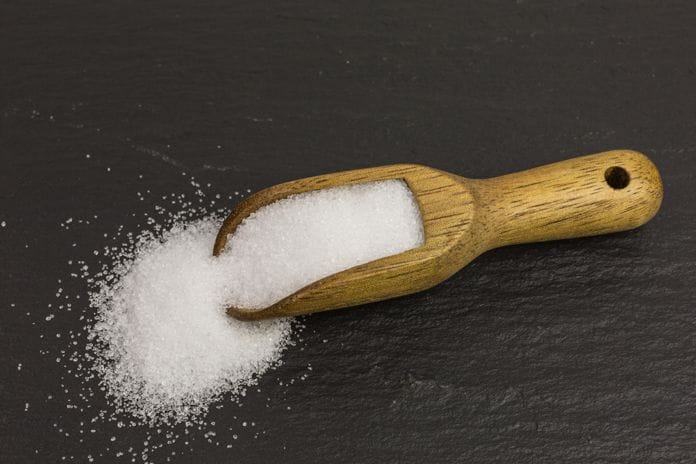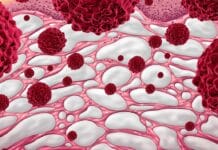The sugar alcohol family, known as polyols, have become popular in chewing gums, lozenges, and dental hygiene products due to their unique ability to add sweetness and improve oral health. Introduced in 1970, xylitol has recently been at the forefront of the discussion with benefits backed by extensive research. It has been incorporated into many dental hygiene products across several brands. Yet there are a few other members of the polyol family gaining popularity. Erythritol, in particular, has similar properties to xylitol and stands the test against bacteria forming plaque acids just as well. In most cases, erythritol is actually more effective. Erythritol is worth a closer look for dental professionals and patients, not to replace xylitol, but as an alternative with its own wonderful benefits.
Commonly known sugar alcohols include isomalt, hydrogenated starch hydrolysates (HSH), lactitol, mannitol, maltitol, sorbitol, and xylitol. They are carbohydrates that have chemical characteristics of sugars and alcohols5. Erythritol is the smallest molecular member of the polyol family, a four-carbon sugar, it is found in algae, fungi, and lichens. Introduced to the market in 1990, it is available in over sixty countries today. It is the only polyol commercially produced from sugars and starches by fermentation1. Wine, sake, beer, watermelon, pears, grapes and soy sauce are among several foods naturally containing erythritol4.
The oral cavity is affected by two main plaque-induced diseases, caries and gingivitis3. Erythritol has been proven to reduce the amount of bacterial formation associated with both diseases. All polyols are not metabolized by oral bacteria and do not contribute to cariogenic activity while reducing acid production, but the ability to reduce or inhibit bacterial growth and maturation is unique to erythritol3. In vitro studies of erythritol showed, the sugar alcohol decreased adherence of fourteen different strains of polysaccharide forming oral streptococci2. This means erythritol inhibits growth and reduces the effects of some caries-related Streptococcus mutans on the oral cavity. The authors of the study believed the mechanism of action to be that erythritol “passes through the cell membrane and suppress growth by interfering with enzymatic pathways involved in S. mutans growth2.”
As far as biofilm reduction, a separately released portion of the study found that erythritol works “via several pathways, including suppression of growth resulting from DNA and RNA depletion, attenuated extracellular matrix production, and alterations of dipeptide acquisition and amino acid metabolism2.” When incubated with a 10% concentration of erythritol the process inhibits the maturation of the microstructure and unique chemical fingerprint of gingivitis-associated bacteria such as Porphyromonas gingivalis and Streptococcus gordonii2. Each of these effects reduces overall biofilm formation and at higher levels of incubation with erythritol were found to inhibit some bacterial growth completely. When compared to xylitol and sorbitol, erythritol had the highest overall reduction of dental plaque weight and S. mutans levels1.
Erythritol powder with air polishing in periodontal therapy is a great option for clinical application of the polyol. It has a similar particle size and abrasive quality to the more commonly used glycine powder and has no cariogenic properties. It also adds the benefit of a sweet taste to the procedure1. Thirty-eight participants in a randomized, controlled, parallel-group clinical trial showed improved clinical attachment and reduced bleeding with probing and pocket depths. Results from air polishing with erythritol and traditional hand scaling therapy were not statistically different, but in feedback, air polishing was the preferred treatment by participants1.
Erythritol’s benefits are not limited to the oral cavity and may be helpful in a number of chronic health issues. It has no calories, no effect on blood glucose levels, and erythritol has up to 80% the sweetness of sucrose making it a perfect sugar substitute for diabetic patients1. Cardiac patients may also be interested to know that erythritol has been found to improve small vessel endothelial function and cardiac vasodilation by reducing arterial stiffness1,4.
Erythritol is different from the rest of the sugar alcohols in that the small molecular size allows it to be more rapidly and completely absorbed in the small intestine. It is not metabolized by the body and is excreted in the urine unchanged1. Other sugar alcohols, including xylitol, have much slower absorption rates. With the exception of erythritol, in large amounts, all other sugar alcohols may pass into the colon leading to gastrointestinal discomfort. There have been many studies showing no adverse effects by consuming erythritol in the same amounts, making it the best polyol option for those with IBS or other gastrointestinal concerns1.
Daily use of erythritol may provide oral and systemic benefits for patients. Erythritol has many of the benefits of the polyol family, with smaller effective doses and fewer side effects, dental professionals can look forward to seeing more of this sugar alcohol. It is currently available in chewing gum, hard candies, toothpaste, xerostomia products, and many other reduced-calorie sugar-free food products.
Before you leave, check out the Today’s RDH self-study CE courses. All courses are peer-reviewed and non-sponsored to focus solely on high-quality education. Click here now.
Listen to the Today’s RDH Dental Hygiene Podcast Below:
SEE ALSO: All About Xylitol: The New Sugar Sweetness with Benefits
DON’T MISS: Oil Pulling: Should Dental Hygienists Recommend It?
References
- Cock, P. D., Mäkinen, K., Honkala, E., Saag, M., Kennepohl, E., & Eapen, A. (2016). Erythritol Is More Effective Than Xylitol and Sorbitol in Managing Oral Health Endpoints. International Journal of Dentistry,2016, 1-15. doi:10.1155/2016/9868421
- Hashino, E., Kuboniwa, M., Alghamdi, S., Yamaguchi, M., Yamamoto, R., Cho, H., & Amano, A. (2013). Erythritol alters microstructure and metabolomic profiles of biofilm composed of Streptococcus gordonii and Porphyromonas gingivalis. Molecular Oral Microbiology,28(6), 435-451. doi:10.1111/omi.12037
- Janus, M. M., Volgenant, C. M., Brandt, B. W., Buijs, M. J., Keijser, B. J., Crielaard, W., Krom, B. P. (2017). Effect of erythritol on microbial ecology of in vitro gingivitis biofilms. Journal of Oral Microbiology,9(1). doi:10.1080/20002297.2017.1337477
- National Center for Biotechnology Information. PubChem Compound Database; CID=222285, https://pubchem.ncbi.nlm.nih.gov/compound/222285 (accessed Feb. 11, 2018).
- Sugar Alcohols. (2016, June 6). Retrieved February 8, 2018, from http://www.accessdata.fda.gov/scripts/interactivenutritionfactslabel/sugar-alcohol.html











